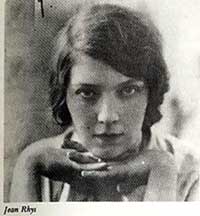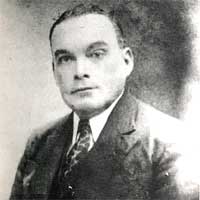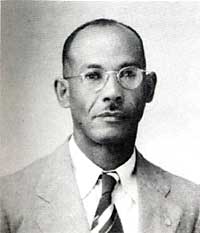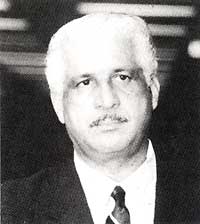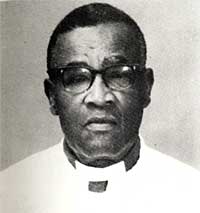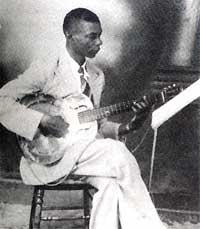Dominica’s Culutral Icons
A look at the pioneers of Dominica’s culture from an article by Dr. Lennox Honychurch
Only the Catholic Convent and the Dominica Grammar Schools existed in the 1900 to give the basic academic knowledge to a few scholars. Children of the prominent Creole families were taught music in the classical manner and their talent was popular in the drawing room assembles of Roseau. They played the favourite folk tunes of the day and this love for local melody linked to their formal knowledge of music and skill with piano, violin, trumpet and later the saxophone produced such musical families as the Potters, Boyds, Isaacs, Rocks and the Didiers.
It is thanks to a large extent to these families and their offspring that much of our older folksongs survive, for it was they who had the ability, love and interest, before the days of cassette recorder, to note the words and tunes and hand them onto us. Among them was Mabel Boyd, later Caudeiron, who to the very last day of her life was teaching traditional songs and dances to the younger generation.
The plastic arts: painting, sculpture and the like were established art forms which were not widely practiced in any of the Caribbean colonies. The traditional woodcarving of West Africa did not survive in Dominica and the art is only now being reviewed through schools and training programmes.
Since most of this century was devoid of opportunities for literary and artistic exposure, it is interesting that Dominica has been able to produce and nurture such a varied collection of talented artists and writers It is perhaps the overbearing natural force of the island itself, which has jolted the inner senses of our people and thus created the yearning to express the experience in some tangible form. Like love for this island, it is a force, which is difficult to explain.
Jump to:
Writers, Novelists and Poets
Jean Rhys – 1890-1979 Our list of authors is undoubtedly headed by this Dominican, who along with V.S Naipaul, is the most internationally recognised author from the Caribbean. She was born in Cork Street, Roseau, in 1890, went to school at the Convent and left for England when she was sixteen. Her father was a Welsh doctor and her mother a Creole from the Lockhart family, which owned Geneva Estate at Grand Bay.
Jean Rees-Williams, as she was then spent the First World War in England, then married a Dutch poet and lived a rootless wandering life in Europe, mainly in Paris and Vienna. Her first book, ‘The Left Bank’, was published in 1927 and others followed in 1928 and the 1930s. It was in 1966 that her book, ‘Wide Sargasso Sea’ brought her international fame and all her other books were republished. Part of Sargasso Sea takes place in Dominica and all of the others have traces of her childhood: crumbling houses, heated masquerades, cool streams, and green threatening mountains. She only visited Dominica again once in the 1930s and died in England in 1979.
Places of interest
- Vena’s Guesthouse, Roseau
- Geneva Estate House, Grandbay
Phyllis Shand Allfrey (1907 – 1986). This poet, author editor and politician was born here in October 1907. She left for the USA and then England as a teenager and only returned toPhyllis Shand Allfrey Dominica in 1953 after her active literary political career in Europe. Her works appeared in the Manchester Guardian and Argosy and her poems won prizes, including second prize in a world poetry prize for women. Mrs. Allfrey’s novel of Dominica “The Orchid house” was published in England in 1953 and in France in 1955 with the title “La Maison de Orchidées”. In 1982 it was republished as a modern classic. It is a prominent Caribbean work featured in most articles and dissertations on West Indian Literature. In 1955, Mrs. Allfrey founded the Dominica Labour Party and in 1958 topped the polls as one of Dominica’s two representatives in the Federal Parliament of the West Indies. There she served as minister of Labour and Social affairs until the federation collapsed in 1962. She returned to Dominica and briefly edited the Dominica Herald, before starting her own paper The Star (1965-1982) which, through its short story and poetry pages are much encouragement to young Dominica writers. Mrs Allfrey more than half of a new book ‘In Cabinet’ before her death in 1986.
Elma Napier – 1892-1973. This other woman writer and politician was born in Scotland in 1892 but spent most of her life in Dominica. She settled with her family at Calibishie in 1932 and quickly became a leading literary and political personality on the island. By then she was already a published author in one book and a variety of articles and short stories for magazines in Australia and Britain.
Apart from two autobiographies: ‘Youth is a Blunder’ and ‘Winter in July’, Elma Napier wrote two novels with Dominica settings: ‘Duet in Discord’ and ‘Flying Fish
Whispered’.
In 1940 she became the first woman to be elected to any Caribbean legislature and served as representative for the North Eastern District for some ten years. She died here in 1973.
Emelda Peter – 1898-1963. Miss Peter was born at Portsmouth and received her education at the Roseau Convent. She had a natural talent for writing and received much encouragement from Mrs Napier but like others at that time she lacked the opportunities for exposure. She was however, luckier than most and some of her pieces on Dominican life were published on the British newspaper the Manchester Guardian in the 1930s.
Daniel Thaly- 1878-1950. It is a sad reflection on our knowledge of ourselves that so few Dominicans have even heard the name of the local poet Dr. Daniel Thaly, while in Guadeloupe and Martinique his poetry is studied along with the works of Aime Cesaire and the other leasding writers of the French Antilles. He was born in Dominica in 1878. His mother was a Bellot and his mother was of a Martinique family. Dr. Thaly was educated at the Lycee St. Pierre in Martinique and studied medicine in Toulouse France, graduating in 1905.
Medicine however was merely an occupation, for his heart was really in Literature. He worked as an archivist at the schoelcher Library at Fort De France and then came back to Dominica. He contributed work to several Parisian magazines and produced about 8 books of his own poetry. Published in Paris, these are all in French but they are filled with beautiful images of Dominica.
“Ilse mysteries, Antille inviolee Dominique aux monts bleus, aux soufrieres d’or…”
His published work: poems, books, anthologies, range from 1899- 1948. Themes of the island are mixed with visions of Africa and passionate love poems; unrequited love it appears for he died here a bachelor in 1950.
J.R. Ralph Casimir – 1898-. It will surprise the young generation of followers of Marcus Garvey to find out in their midst was a founding agent of Garvey’s Universal Negro Improvement association. Ralph Casimir was born in St. Joseph in 1898 and educated at the St. Joseph Government School. He was organiser and General Secretary of the local branch of the U.N.I.A., 1912-1922 and also agent for Garvey’s Black Star Line. Black awareness and pride consumed his attention and is evident in his poetry without the bitterness and rancour of some other more modern writers.
He also has a keen interest in politics and besides being a Roseau town councillor, was Secretary of some of the early political organisations and of the famous West Indian Conference of 1932. Casimir has contributed articles and poems to local regional and US newspapers and magazines including the Pittsburgh Courier for which he was correspondent.
He has published four anthologies of poems and five booklets of his own work. The first appeared in 1943 and the latest in 1975. He has worked as a bookbinder, Commission Agent and Solicitor’s Clerk and at the healthy and active age of 84, helped this author with material for this section of the book!
Edward Scobie. Born in Roseau in 1918, this short story writer, poet, journalist and lecturer has more recently concentrated his work on black history. He left Dominica to join the Royal Air Force in England in World War II and stayed on afterwards for twenty-three years. There he involved himself with literature and journalism corresponding for American magazines such as Jet and Ebony and broadcasting BBC Programs. It was at that time and place of the flowering of the West Indian literature and Scobie was encouraged by others of his group such as Lamming, Carew, Salkey and Brathwaite.
He returned to Dominica in the early 1960s and edited the Dominica Herald. Here he had the inspiration for stories and poetry on island life including his ode to Masquerade “R.I.P La Peau Cabrit”. He was a prominent political figure in the early days of the Freedom Party and served as mayor of Roseau.
His book Black Britannia about the history of Black people in Britain was published in Chicago in 1972.
Wilfred Oscar Morgan (W.O.M.) Pond – 1912 – 1985, was another retired teacher who has been writing poetry for many years. He specialises in acrostics which he would produce to mark certain events such as national anniversaries. He is best known as the composer of the lyrics of Dominica’s National Anthem.
Daniel Caudeiron. During his active sojourn in Dominica, Daniel Caudeiron produced a book of poems and wrote one of P.A.T’s first local plays, ‘Speak Brother Speak’. He also helped to produce such literary pamphlets as ‘Free Your Mind’ and ‘Washeen’. Unable to contend with the tight confines of Dominican politics and attitudes, he moved to Canada in 1975, where is now an active writer and radio and television personality in Toronto.
There has been a burst of activity on the literary field over the past years but much of it has been made up of scattered short stories and slim volumes of poetry. Alwyn Bully has been a leader in this, as well as other areas of the cultural spectrum, either by encouraging people or producing work himself. He will confess that the net administrative responsibilities has robbed him of the time to concentrate on his own creativity, but even so, he has managed to write a fistful of songs, play and a lesser number of short stories and poems. Dramatist as well as writer, he has created such plays as ‘Streak’, ‘The Ruler’, ‘Nitebox’, ‘Folk Nativity’, ‘Pio Pio’, and ‘Good Morning Miss Milly’ as well as radio drama serials, all performed by the People’s Action Theatre which he has carefully nurtured for 10 years.
Among the band of growing short story and poetry writers who have produced their own booklets or whose work has appeared in magazines or anthologies are:
Alfred Leevy, Edward Leblanc Giftus John, Anthony Lockhart, Arundel Thomas, Leonard Joseph, Ras Albert Williams, Eddie Wilson, Mark Sylvester, Chris Seraphine, Raymond Lawrence, Anna Burnette, Eleanor Roberts, Ras Moses Useline Pascal, Joan Bernard, Michael White, Alec Lazare, Roy Sandford, Kristine Simelda, Jeno Jacob and Dorothy Levy.
A group has formed, named the Waitukubuli Writers, “Promoting authentic Dominican literature for readers around the world”, and to push the literary arts in Dominica.
Musicians
Lemuel McPherson (L. M.) Christian – (1917 – 2000) opened Dominica’s first music school in 1944. He ran it conjunction with typing classes and his deepest interest and dedication to music has provided some of the only training for many of our aspiring musicians. Mr. Christian is the composer of the music of Dominica’s National Anthem. He fostered his love of music among his children and two daughters; Peganni and Palestrina are now professional musicians in Britain. His niece Pearl is also an accomplished musician who heads the music section of the Cultural Department. He has since passed away.
Cecil Bellot and Hesketh Casimir are names which stand out in the development of formal music through their contribution to the leadership and survival of the Music Lovers Government Band. In 1982 the band celebrated its 50th Anniversary. It has given much pleasure over the years and continues to provide military music for ceremonial occasions. Although 20th Century musical entertainment does not fall within the confines of this book it would be remiss not to mention Norman Letang for the influence he has had on modern local music.
For information about the current musicians in Dominica click HERE.
Painters and Artists
Agostino Brunias (1730-1796) was the earliest and one of the most colourful artists in the history of Dominica. He arrived here in 1771 as a travelling artist of Governor Sir William Young and its people. He painted Kalinagos, wildlife, landscapes and a wonderful variety of social scenes covering town and plantation life.
Although he returned to Europe on two brief visits, he made Dominica his home, had two children by a mulatto woman and died here in 1796. His paintings of Dominican scenes and people now fetch fortunes in Paris, London, Rome and New York.
Percy Agar (1897-1954) was a very sensitive Dominican artist whose feeling for the island is clearly expressed in his work. Born at La Haut neat Loubiere, he went to school in England but his heart was always among the hills of his island home and before 1920, up to his death in 1954, he concentrated his talented brush on the scenery of Dominica.
His medium was watercolour. Much of his work was sold in Barbados and to passing visitors but those few examples which remain here, show detailed foliage drifting into a background of mountains or seascapes with hardly a trace of a human in sight except perhaps for a small hut or fishing boat in the distance.
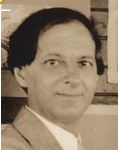 Stephen Haweis (1879-1969) was one of those eccentrics who drift upon Dominca’s shores from time to time. He was born in England in 1879. He was an artist in Paris at the time of young Picasso and Matisse. He painted in the Pacific, Africa, the Bahamas and the United States before settling in Dominica in about 1929. His home was at Mount Joy near Springfield and there in his garden studio he painted and wrote pamphlets and irate newspaper articles on Dominica. In the mid sixties, he published a book called simply “Mount Joy”.
Stephen Haweis (1879-1969) was one of those eccentrics who drift upon Dominca’s shores from time to time. He was born in England in 1879. He was an artist in Paris at the time of young Picasso and Matisse. He painted in the Pacific, Africa, the Bahamas and the United States before settling in Dominica in about 1929. His home was at Mount Joy near Springfield and there in his garden studio he painted and wrote pamphlets and irate newspaper articles on Dominica. In the mid sixties, he published a book called simply “Mount Joy”.
Haweis’ paintings were mostly done in oils: forest scenes, bright fish against foliage and peasant characters working or dancing. Few examples remain in Dominica; most were quickly purchased by visitors. The largest collection belongs to John Archbold and is in Virginia USA, while a small sample of Haweis flower and religious Paintings are in the Possession of the Bishop of Roseau at the time. He was a gifted artist and his better pieces capture the feeling of the island well. He died here in 1969.
This page is a work in Progress!
More Cultural Icons coming soon.

